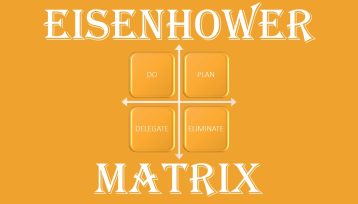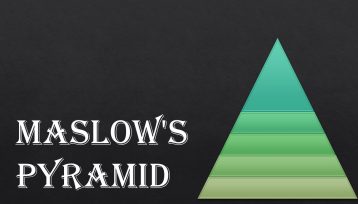The product life cycle has four main stages: introduction, growth, maturity, and decline. Each phase of product development has its characteristics and requires detailed analysis and proper management.
Before developing a marketing strategy for product development, it is necessary to determine which phase of the product’s life cycle is. The wrong choice of product management strategy can lead to unnecessary costs for the company or to a lack of investment in the product and the loss of market share.

Market introduction
The stage of product introduction into the market is the first stage of product development. It may take a long time, or it may take several months. It all depends on what efforts the company is making at this stage, as well as on the company’s investment opportunities in advertising support for the product. The key strategies for this stage are as follows.
Dynamics of sales and profits
The stage of launching a new product on the market is characterized by low sales volumes with a moderate growth rate. A new product or service gradually begins to spread through the distribution channels. The target audience is not sufficiently aware of the existence of the product, the product is not readily available.
There is a gradual accumulation of knowledge about the product. Often, the launch stage can be unprofitable due to the large initial costs of product development – advertising, sales promotions, etc.
Competition
The level of competition at the introduction stage is usually quite low since it is assumed that the company is launching a completely new product with exceptional differentiating properties that are not yet available to competitors. It is the unique properties that enable growth.
Pricing
During the introduction phase, two different pricing strategies can be used: a skimming strategy or a low-price strategy. The skimming strategy is used when the product has strong competitive advantages and the consumer is not price sensitive. The low-price strategy is used to build high coverage and quickly capture the market.
Assortment management
The depth of the product line should be relatively short to minimize implementation costs per unit of product.
Distribution of goods
Typically, at the introduction stage, narrow distribution channels for a new product are used to dissipate the company’s insufficient resources to cover the entire market. The highest priority distribution channels are selected, providing the maximum sales volume, and having a low representation of key competitors, and they achieve leadership in distribution, quality of the display, and product visibility.

Target audience
The first trial purchases of an unknown product are made by innovative consumers. At this stage, it is very difficult to sell a product to a mass consumer. It is recommended at the stage of product implementation to focus on innovators and the core of the target group, who can form public opinion, attitude towards the product, and motivate representatives of the rest of the target audience to make a trial purchase.
Thus, in working with the target audience, the emphasis should be on:
- Special programs for innovative leaders
- Tracking reviews of a new product and working with objections. Negative reviews should be considered and, if they are critical, applied in the product, eliminated, and changed into positive ones
- Special programs involving experts or opinion leaders who do not consume the product, but have an important influence on consumer choice
Promotion strategy
At the stage of product introduction, it is recommended to focus on the following promotion goals: increasing visibility and knowledge, trial purchases, obtaining high satisfaction from the purchase.
Product promotion at this stage of the life cycle should consist of the following steps:
- An advertising campaign aimed at building knowledge and awareness of a new product and its key properties – advertising messages of informational and educational nature with maximum coverage of the target audience
- Promotions aimed at the sales channel to build the distribution of a new product as soon as possible and ensure the required level of visibility of a new product for the target audience
- Promotions for the consumer to stimulate trial purchases
Growth stage
The growth stage is very important for the company, as it creates the most favorable conditions for dominating the market and for increasing the profitability and stability of the company. All the company’s efforts at this stage should be aimed at its extension, at creating entry barriers for new players, at achieving maximum market coverage – all this will ensure the most comfortable existence of the company at the next stage of its life cycle.

Dynamics of sales and profits
The growth phase begins with a sharp surge in sales and is characterized by further high revenue growth rates. The sharp increase in sales is due to two factors: attracting new consumers to the product and repeat purchases by existing consumers who have already purchased the product and have a positive experience using it. Profit during the growth stage also grows at a rapid pace and reaches its peak at this stage, since over-investment is not required for tough competition.
Duration
The main task of marketing at this stage is its maximum extension, which is achieved by using all sources of growth and building entry barriers for new players.
Competition
Competition is intensifying and the number of players grows dramatically as the growing market segment attracts new players looking to make quick profits. At the same time, competitors are entering the market with improved, more competitive products. Strong big players are the first to enter the market, capable of switching to current consumers and capturing established market share through high investment opportunities.
Large players are the most dangerous. They can restructure the market for themselves – to provide leadership in price, visibility of advertising, in the product. Also, large players have extensive experience of working in different competitive conditions and apply proven methods of competitive wars. After the big players, smaller companies emerge, using mainly competition through niche segments.
Pricing
Pricing is becoming one of the ways to compete. As a result of tougher competition, cheaper analog products or more affordable product variations appear. All this leads to lower prices for the product, large discounts, and price promotions. If a skimming strategy is used at the stage of introduction, the company lowers the price at the stage of growth to increase the availability of goods.
Assortment management
At the growth stage, there is an active expansion of the product line, new product variations, improvement of quality characteristics to maximize the growth stage and create entry barriers for competitors in all market segments. New assortment extensions help to retain existing consumers and keep the product relevant against the backdrop of tougher competition.
Distribution of goods
The product and its variations should become as accessible as possible for every market consumer. During the growth stage, the product is in maximum demand. It provides the sales chain employees with the best conditions for working with the product and, as a result, easier negotiations with resellers to build better visibility.
Target audience
At the growth stage, an intensive growth of the consumer base is observed. More conservative consumers make trial purchases of the product. The product is being accepted by the mass consumer. Marketing efforts are shifting from innovative leaders to mass consumers to attract the maximum percentage of the target audience.
When working with the target audience, the emphasis should be on:
- Achieving 100% awareness of the company’s product among the target audience
- Search for new consumers – use all the opportunities to expand the target audience
- Increasing the frequency of use of the product by existing consumers
- Active formation of loyalty and commitment to the product
Promotion strategy
The promotion strategy pursues the following goals: top of mind in the minds of consumers, the formation of high adherence to the product, increasing the frequency of use, development of product recommendations.
Promotion of a product at the growth stage should consist of the following steps:
- Advertising campaign with maximum coverage of the target audience
- Shifting the profile of the advertising message from informational and educational to convincing in the undoubted superiority of the product over competitors
- Promotions for consumers aimed at increasing the frequency of product purchases and repeat purchases
- Promotions for distribution channels to form leadership in distribution
Maturity stage
The maturity stage is a stage of stability in terms of demand, technology, and level of competition.
Dynamics of sales and profits
The level of sales at the stage of maturity stabilizes, the growth rates slow down as much as possible. The company’s product has reached its peak of sales and provides a stable income due to the formed consumer base. Profit levels begin to decline at maturity.

Duration
The stage of maturity is the longest of all stages of the product life cycle. It is built on the consumption of conservative consumers, on the popularity and wide representation of the product which ensures a stable level of sales over a long period.
The duration of the stage directly depends on the marketing efforts that were made during the growth stage. The higher the results of product development were achieved at the growth stage the longer the maturity stage will be.
Competition
The level of competition in the market is becoming maximum and stabilizing, which, in the face of slowing growth rates, creates a more aggressive struggle for existing consumers.
Pricing
At the stage of maturity, the average price level is formed. There are no changes in the established price clusters, and each manufacturer has an established price positioning. Price competition decreases and only turns into short-term price promotions for consumers.
Assortment management
The depth of the product line at the stage of maturity usually does not increase but goes through several modifications and micro-improvements to the existing range. All changes in the assortment are aimed at maintaining the relevance and modernity of the product. New technologies do not appear at the stage of maturity, but the appearance of goods is updated.
If a new technology is discovered that significantly improves the product and changes the nature of competition, which creates a unique long-term competitive advantage for the company, then the existing product life cycle curve turns into a new life cycle curve and growth begins.
Distribution of goods
The product becomes available through all sales channels, the distribution limit has been reached. Now the emphasis in distribution is made on the display of goods, their visibility among the numerous competitors. At the stage of maturity, it is important to maintain the achieved level of product distribution for the longest possible period.
Target audience
At the stage of maturity, the maximum coverage of the target audience is reached, and a culture of product use is formed. Working with the target audience, the emphasis is on customer retention. Find new micro-niches, monitor product satisfaction, and implement operational measures while reducing product loyalty.
Promotion strategy
At the stage of maturity, an advertising campaign should ensure that the accumulated level of awareness of the product is maintained, for as long as possible to keep awareness of the key competitive advantages of the product in the mind of the consumer. There is a strict optimization of the used communication channels to increase the effectiveness of advertising investments.
Decline stage
The decline stage is the decay stage of a product life cycle. But even in this phase of product development, programs are required that can extend the success of the product.
Dynamics of sales and profits
The company’s sales are starting to decline but may stop at a certain minimum level, as the most conservative segment of consumers continues to be faithful to the product. Profits begin to decline.

Duration
The decline stage can be gradual and prolonged (for example, when the product is relevant, but it ceases to be supported as a result of increasing costs); or fast enough (in the case when better substitute products appear on the market and the product becomes instantly obsolete and irrelevant).
Competition
The competition in the segment is decreasing due to the disappearance of weak players with a small market share. Only the big producers remain.
Pricing
Typically, the level of average prices during the downturn is reduced to maximize consumer retention.
Assortment management
Product line depth is narrowing. It is recommended to reduce the assortment line of the product as much as possible. Leave only the most successful variations, to focus all efforts on a limited number of positions, while maintaining economies of scale.
Target audience
The consumer base is shrinking. When working with the target audience, the emphasis should be on maximizing consumer retention and maintaining the level of product knowledge.
Promotion strategy
Product promotion consists of the following points: reduction of advertising investments or abandonment of them; using low cost and high reach communication channels; preservation of knowledge.
Find more analytical and strategic marketing information in the corresponding sections of the website.




